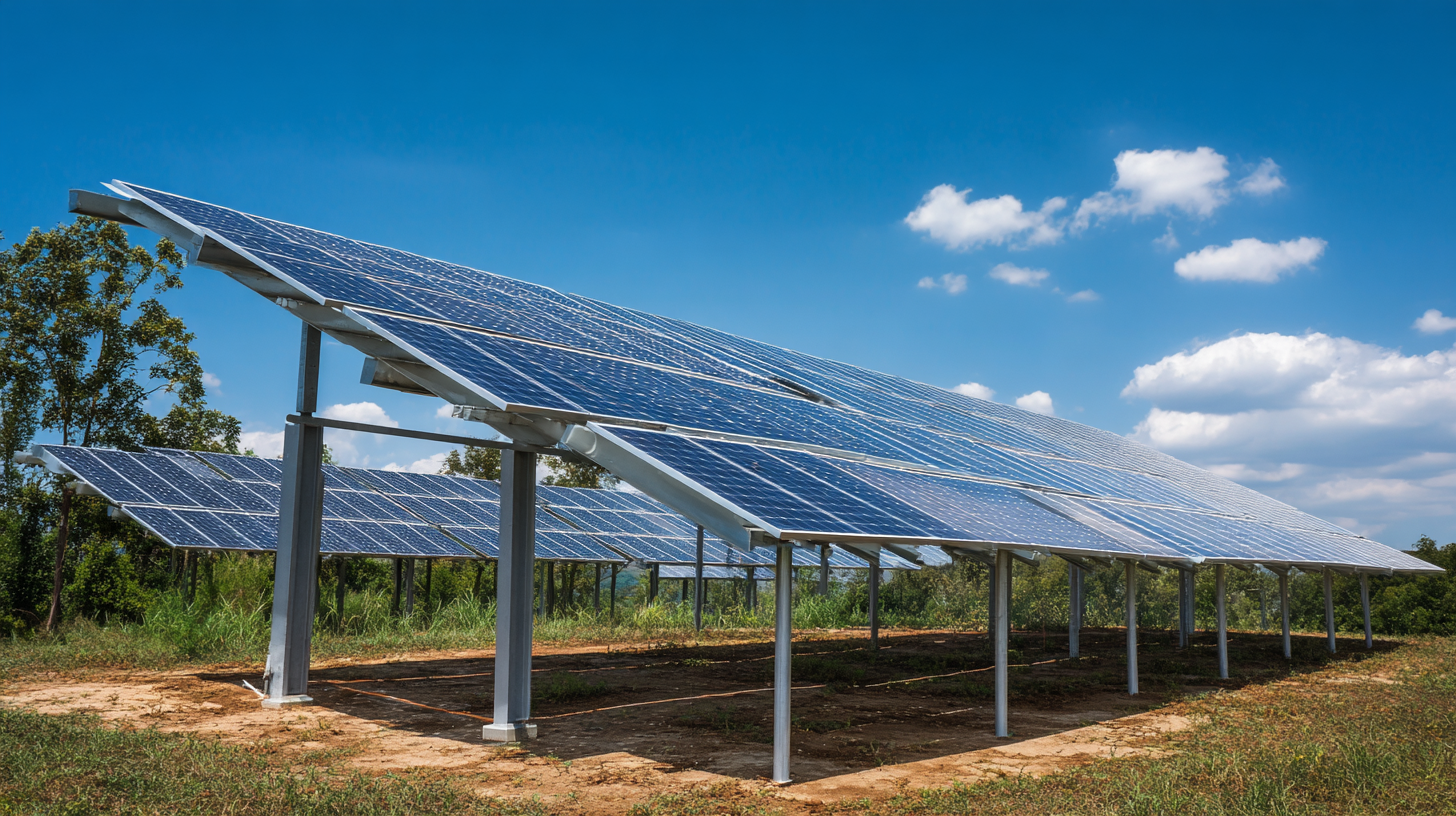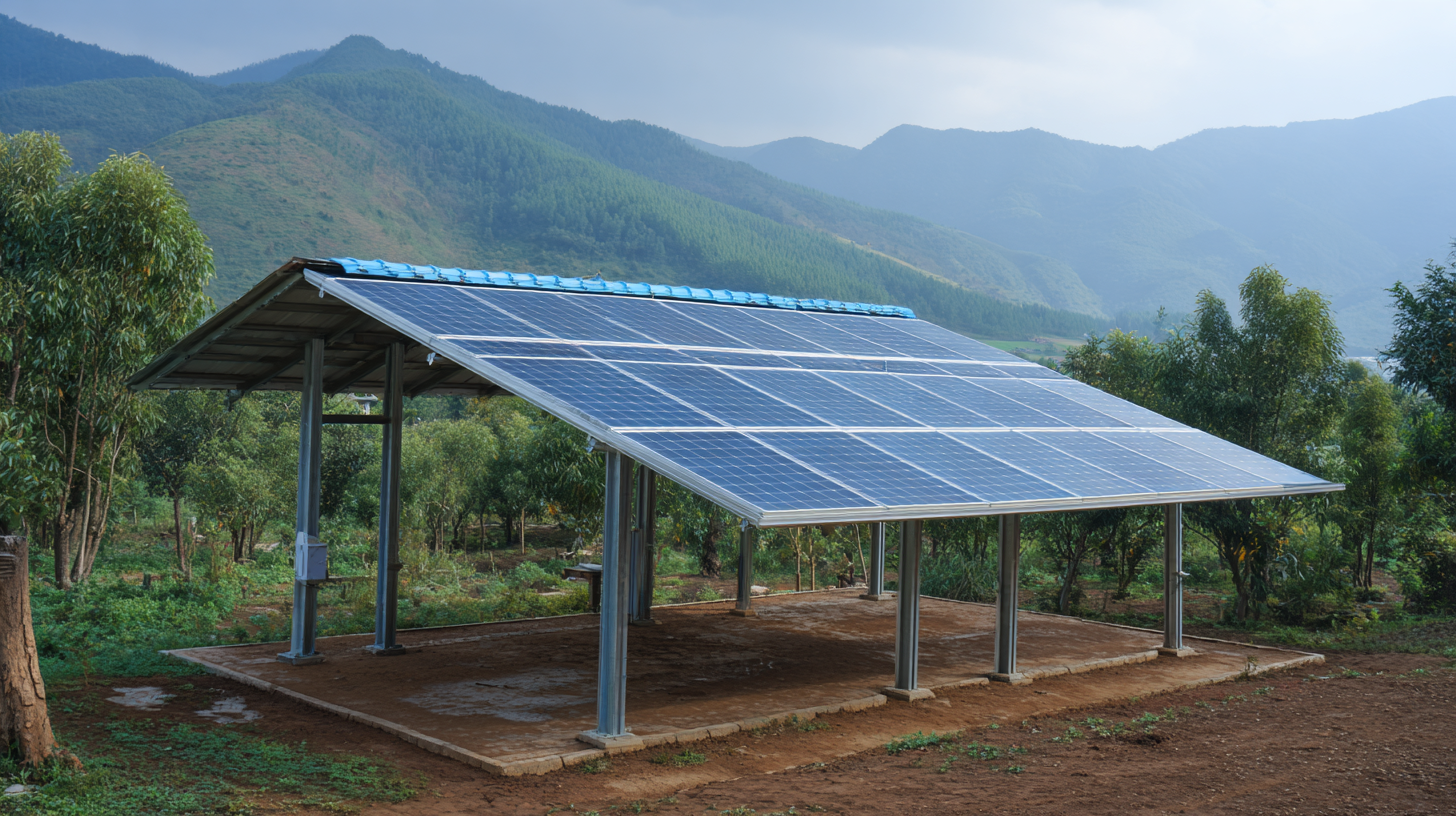7 Essential Features of the Best Solar Energy System for Home Use
As homeowners increasingly seek sustainable energy solutions, the demand for a reliable solar energy system for home use has surged. According to the Solar Energy Industries Association, residential solar installations grew by 20% in 2022, underscoring a growing recognition of solar power's potential for reducing energy costs and enhancing energy independence. However, not all solar energy systems are created equal; selecting the right one is essential for maximizing efficiency and savings. A well-designed solar energy system can significantly lower household electricity bills, reduce carbon footprints, and even increase property values.

In this blog, we will explore the seven essential features that characterize the best solar energy systems for home use, providing you with a comprehensive checklist to make informed decisions in your solar energy journey.
Key Factors to Consider When Choosing Your Home Solar Energy System
When selecting a solar energy system for your home, it’s vital to consider several key factors that will determine the efficiency and effectiveness of your investment. First, assess your energy needs by analyzing your electricity bills to understand your consumption patterns. This will help you choose a system that meets your household's requirements without overspending on unnecessary capacity.
Another crucial aspect to consider is the quality of the solar panels and inverters. Look for products with high efficiency ratings and solid warranties. Brands that offer robust customer support and service plans can also enhance your long-term satisfaction.
Tip: Always check for certifications and reviews of the solar equipment you're considering. It’s essential to invest in reputable brands to ensure durability and maximum performance.
Additionally, consider the installation process and the professionalism of the company handling it. A well-executed installation will not only optimize the system’s efficiency but also prolong its lifespan. Comparing quotes and checking the installers' reputations can lead you to find the best team for the job.
Tip: Get multiple quotes from different providers to gauge the market rates and understand what options are available.

Understanding Different Types of Solar Panels for Residential Use
When considering a solar energy system for home use, understanding the different types of solar panels available is essential for making an informed decision. The primary types of solar panels include monocrystalline, polycrystalline, and thin-film. Monocrystalline panels are known for their high efficiency and sleek appearance, making them a popular choice for homeowners with limited roof space. Their advanced manufacturing process allows them to convert sunlight into electricity at a higher rate than other types, thereby maximizing energy output over a smaller area.
Polycrystalline panels, on the other hand, offer a more budget-friendly solar solution. While they are slightly less efficient than monocrystalline panels, they are still an excellent option for those with ample roof space. These panels are made from multiple silicon crystals, resulting in a distinctive blue hue. Thin-film solar panels are the lightest and most flexible option, allowing for unique installations, such as on curved surfaces. Although they typically have lower efficiency rates, their adaptability and lower cost make them a viable alternative for specific applications. Understanding these differences will help homeowners choose the most suitable solar panel type for their energy needs and budget.

Importance of Inverter Efficiency in Solar Energy Systems
When considering a solar energy system for your home, one of the most critical components to focus on is the inverter. The efficiency of the inverter has a direct impact on the overall performance and energy output of your solar system. Inverters are responsible for converting the direct current (DC) generated by solar panels into alternating current (AC), which is used by most household appliances. A higher inverter efficiency ensures that more solar energy is converted into usable electricity, maximizing your energy savings and reducing your reliance on the grid.
Inverter efficiency can vary significantly between different models and brands. Homeowners should look for inverters with an efficiency rating above 95%. This not only guarantees that your system will operate optimally but also contributes to a longer lifespan, as more efficient models tend to experience less wear and tear. Moreover, advanced options such as string inverters with MPPT (Maximum Power Point Tracking) technology can further enhance performance by adjusting the system’s output according to changing environmental conditions. Investing in a high-efficiency inverter is crucial for anyone looking to harness the full potential of solar energy and achieve energy independence at home.
How Battery Storage Enhances Solar Energy Usability at Home
Battery storage is revolutionizing the way homeowners utilize solar energy, providing a reliable solution for energy independence. By integrating battery systems with solar panels, homeowners can store excess energy generated during the day and use it when the sun isn't shining. This capability is crucial for maximizing the efficiency of renewable energy systems, allowing households to draw on stored energy during peak demand times or outages. The latest developments in the solar and battery storage industry have made these systems more affordable, paving the way for widespread adoption.
Moreover, the emergence of innovative home energy management solutions simplifies the integration of solar and battery technologies. These systems not only enhance usability but also empower homeowners to monitor and control their energy consumption more effectively. With various incentives available to support battery installation, many households are now seeking out high-capacity storage options that fit their needs. The future of home energy looks bright as advanced battery storage continues to evolve, making sustainable living more attainable than ever before.
Evaluating the Cost-Effectiveness of Solar Energy Solutions for Homeowners
As homeowners increasingly seek sustainable energy solutions, solar energy systems have emerged as a cost-effective choice. The growth of the residential solar market illustrates a shift towards renewable energy, with the market expected to reach an impressive $123.23 billion by 2032, reflecting a compound annual growth rate (CAGR) of 9.67%. This surge is driven by various factors, including the expansion of solar leasing and power purchase agreements (PPAs), which significantly lower the financial barriers for homeowners.
Investing in a quality solar energy system not only contributes to environmental conservation but also leads to substantive savings on electricity bills. As solar technology advances, the integration of energy storage systems has become essential. These systems allow homeowners to optimize energy use, store excess energy for later use, and enhance overall energy efficiency. With innovations such as smart solar technologies, which are projected to grow at over 12% CAGR from 2024 to 2032, homeowners can enjoy enhanced performance and reliability in their solar energy solutions, making them a rational investment for both current savings and long-term financial benefits.